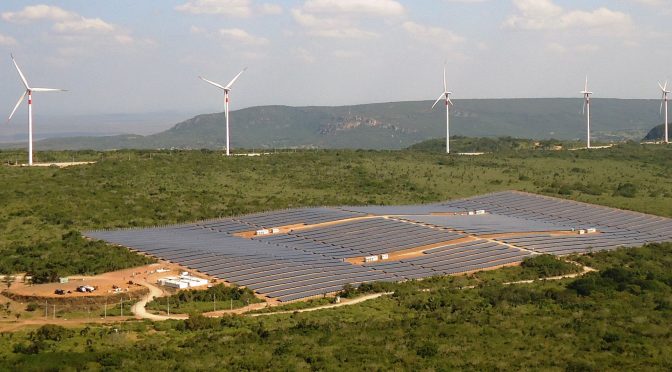The year 2021 saw the highest rate of renewable energy use, at the same time as there was the largest increase in demand for coal since 1985. At least 50 countries got more than a tenth of their power from wind and solar power, according to to a report produced by researchers from the Ember organization.
Energy sources, such as the sun and wind, are resources increasingly used to generate electricity, says the group of experts that evaluated the energy sector for the Ember organization, which produced the 2021 Global Electricity Review survey.
The latest document referring to the global monitoring of energy production indicates that last year a record in the use of solar and wind energy was registered, but warns of an abrupt increase in the demand for coal.
The total number of clean sources generating electricity has increased to 38% globally. The combined wind-solar share reached, for the first time, a maximum of 10%.
“Wind and solar energy are the lowest cost sources of electricity”, compared to the production of electricity from other resources, which is why it becomes necessary to “integrate them into high-level networks”, says the study. At least a quarter of the world’s countries generate “more than 10% of their electricity from these rapidly deployable resources.”
“Wind and solar energy have arrived. The process that will reshape the existing energy system has already begun. In this decade, they must be deployed at the speed of light to reverse the rise in global emissions and combat climate change,” said Dave. Jones, a researcher at Ember’s Global Electricity Review.
According to the document, the Netherlands, Australia and Viet Nam were the states that most quickly switched a tenth of their electricity needs from fossil fuels to green sources in the last two years.
“The Netherlands is a great example of a country with a more northerly latitude, which shows that it’s not just where the sun shines, but you also need to have the right political situation, which makes a big difference for solar energy take off,” he said. Hannah Broadbent, Ember Researcher
In the case of Vietnam, “the huge increase in solar generation was driven by feed-in tariffs (the money the government pays to generate electricity) which made it very attractive for households and utilities to deploy large amounts of solar energy,” he argued. jones. Solar power generation in Vietnam has increased by more than 300 percent in just one year.
energy insecurity
But if climate change is the focus of the report, global energy insecurity is also one of the issues. The year 2021 saw an increase in the demand for fossil fuels, around 9%, the likes of which had not been seen since 1985.
The largest consumption of coal occurred in Asian countries, including China and India. Rising gas prices have made coal a more viable source of electricity for these countries.
“Last year, gas prices were really high, while coal was cheaper than gasoline,” said Dave Jones.
Currently, “what we are seeing is that gas prices in Europe and much of Asia are ten times higher than last year.” Coal also rose, but only three times.
For Jones, increases in gas and coal prices around the world are related to electrical systems, which demand more clean electricity because the economy has fundamentally changed.”
Despite the increase in the use of electricity, the “governments of the United States, Germany, the United Kingdom and Canada are so confident in clean electricity that they draw plans to switch to a network for cem electricity per cent clean in the next decade and a half”, he adds. The document.
The conflict in Ukraine could also boost demand for sources of electricity production that are not dependent on Russian imports of oil and gas.
Hannah Broadbent said that wind and solar energy have arrived and offer a solution to the multiple crises facing the world, be it climate or dependence on fossil fuels. “This could be a real turning point.”


